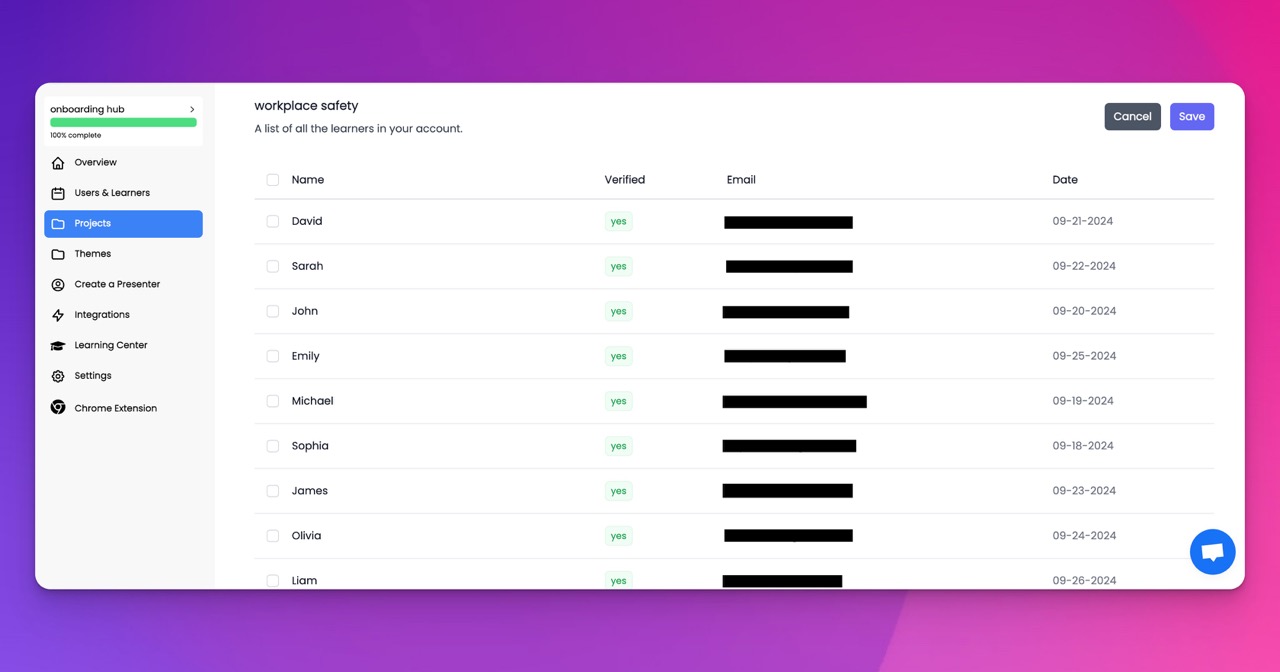🎉 Trainday now integrates with Zendesk and Hubspot 🎉 Trainday now integrates with Zendesk and Hubspot 🎉 Trainday now integrates with Zendesk and Hubspot
🎉 Trainday now integrates with Zendesk and Hubspot
🎉 Trainday now integrates with Zendesk and Hubspot
Contact
Personalize Your Training: How AI Transforms Employee Onboarding in Minutes
In the modern workplace, the onboarding process is a critical phase that can significantly impact an employee's performance, engagement, and retention. Traditional one-size-fits-all training methods are rapidly being replaced by personalized, AI-driven approaches that cater to the unique needs of each new hire. This revolution in employee onboarding, powered by artificial intelligence, is enabling organizations to streamline their training processes, enhance learning outcomes, and get employees up to speed in record time. This blog post explores the transformative power of AI in personalizing employee onboarding and how it is reshaping the way companies onboard their workforce in just minutes.
The AI Advantage in Employee Onboarding
Artificial intelligence is redefining the onboarding experience by offering personalized training solutions that adapt in real-time to the learner's pace, preferences, and performance. This dynamic approach ensures that every new hire receives the most relevant and effective training from day one.
Tailored Learning Pathways
AI algorithms analyze a wealth of data, including job roles, previous experiences, learning speeds, and engagement levels, to create customized learning pathways for each employee. This personalization ensures that new hires focus on the information most pertinent to their roles and skill gaps, making the onboarding process more efficient and effective.
Accelerated Learning and Integration
By leveraging AI-driven assessments and feedback mechanisms, companies can significantly accelerate the learning process. AI identifies areas where employees excel or struggle, adjusting the training content accordingly. This not only speeds up the onboarding process but also helps new hires integrate into their roles more quickly, contributing to the team's success from the outset.
Enhancing Engagement Through Interactive Content
AI transforms onboarding training into an interactive and engaging experience. Through gamification, simulations, and scenario-based learning, AI captures the attention of new hires and sustains their interest throughout the training process.
Gamification and Reward Systems
Incorporating elements of gamification, such as points, badges, and leaderboards, AI-driven training platforms make learning fun and competitive. These reward systems motivate employees to engage with the content fully and achieve their learning objectives.
Realistic Simulations and Role-Playing
AI-powered simulations offer employees the opportunity to practice their skills in a safe, controlled environment. These realistic scenarios prepare new hires for the challenges they may face on the job, enhancing their confidence and competence.
Continuous Learning and Adaptation
One of the most significant benefits of AI in employee onboarding is its capacity for continuous learning and adaptation. AI systems evolve based on feedback and performance data, ensuring that the training content remains relevant and up-to-date.
Real-Time Feedback and Adjustments
AI provides immediate feedback on assessments and activities, allowing employees to understand their progress and areas for improvement. This real-time insight enables new hires to adjust their learning strategies on the fly, fostering a culture of continuous improvement.
Future-Ready Skills Development
As job roles and industry standards evolve, AI-driven onboarding programs can adapt to prepare employees for the future. By analyzing trends and predicting skill requirements, AI ensures that training content stays ahead of the curve, equipping new hires with the skills they need to succeed in tomorrow's workplace.
Conclusion
The introduction of AI into employee onboarding is transforming how organizations train and integrate their new hires. By personalizing the training experience, enhancing engagement through interactive content, and ensuring continuous learning and adaptation, AI is setting a new standard for onboarding efficiency and effectiveness. As companies continue to embrace this technology, they can expect to see significant improvements in employee readiness, satisfaction, and retention, ultimately leading to a more dynamic, skilled, and engaged workforce.
Accelerate Compliance.
Deliver OSHA-Ready Courses Instantly.
Empower your team with data-driven training solutions tailored to your industry's safety standards. Stay compliant, reduce risks, and boost productivity with AI-powered course creation.
